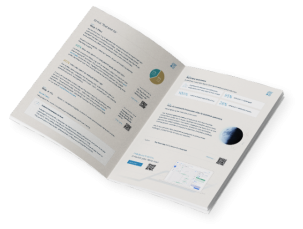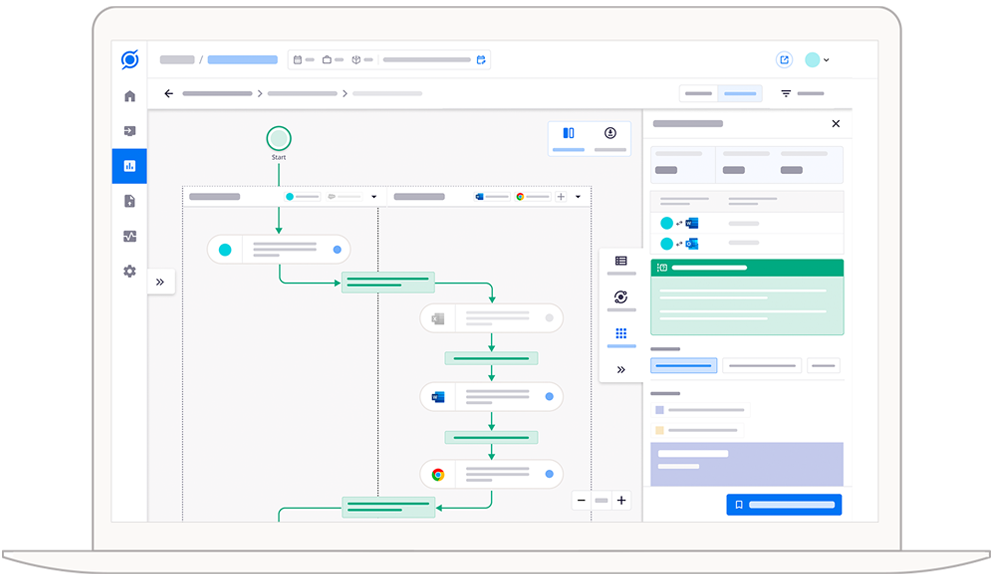- Soroco Tops Everest Group’s PEAK Matrix® Assessment - Four Years in a Row
Scout
Customer Stories
Ecosystem
Work Graph
CPG
Big 4 Accounting Firm cuts month-end closures by 40% for a F100 CPG giant with Scout

The Challenge
One of Big 4’s notable client’s, a Fortune 100 CPG giant, having 3.4 billion daily customers in over 190 countries and a global workforce of over 120K, encountered critical challenges within its global supply chain finance function. To address these challenges, the client sought the Big 4's expertise to automate and standardize processes while reducing the head count for third-party operations. The identified challenges included increased workloads and knowledge turnover resulting in errors, posing risks to service level agreements (SLAs). Additionally, it also contributed to heightened dependency risk, concerning rise in operational costs and increase in time required to close month-end activities.
The Big 4 urgently needed to address these challenges to safeguard its client’s financial stability and operational efficiency.
The Big 4 urgently needed to address these challenges to safeguard its client’s financial stability and operational efficiency.
Industry
CPG
Location
50+ Countries
120K+
Employees
Attempted Solution before Scout
Business leaders needed to investigate over 2000 activities across more than 15 sub-processes within
2 months
Finance leaders of the CPG company attempted to study the processes by interviewing various teams and by examining existing documentation. However, they soon realized that expert assistance and technology-driven analysis from the Big 4 were essential to investigate over 2,000 activities across more than 15 sub-processes within a tight two-month timeline.
Here’s when the Big 4 accounting firm was brought in to do an in-depth process study that would reveal:
- The underlying as-is process
- Areas of manual touchpoints,
- Process inefficiencies, and
- Opportunities for technology led interventions
Here’s when the Big 4 consulting firm was brought in to do an in-depth process study that would reveal:
- The underlying as-is process
- Areas of manual touchpoints,
- Process inefficiencies, and
- Opportunities for technology led interventions
Enter

After considerable evaluation, the accounting firm onboarded Scout and leveraged their domain expertise to achieve a comprehensive understanding of the processes. They amplified their traditional consulting approach with insights from Scout to eliminate potential human biases, providing a holistic 360-degree view.
Scout was quickly put into action as it didn't need complicated integration with current systems and was able to cater to the customer’s application stack. The Scout AI model analysed the interaction data of finance teams across various applications, mapping out how and why work happens the way it does within the supply chain finance function.
This led the model to discover a key insight: significant effort was spent on non-core apps (MS Excel, Outlook) across processes.
Scout was quickly put into action as it didn't need complicated integration with current systems and was able to cater to the customer’s application stack. The Scout AI model analysed the interaction data of finance teams across various applications, mapping out how and why work happens the way it does within the supply chain finance function.
This led the model to discover a key insight: significant effort was spent on non-core apps (MS Excel, Outlook) across processes.
Within
2 weeks,
Scout discovered a key insight- significant effort was spent on non-core apps across processes.
Scout to “find and fix”
Step 1: Find
As the first step, Scout decoded the work patterns of the supply chain finance function and connected them with business activities by analysing interactions between the team and their software. It then automatically classified these work patterns as either core process activities or non-core activities. Within two weeks, the following insights were shared:
3000+ Excel files were used, with approximately 20% of the effort involving repetitive and predictable data entry.
3000+ Excel files were used, with approximately 20% of the effort involving repetitive and predictable data entry.
Going further, Scout also inferred the reasons as to why teams spent so much time on non-core activities: information silos and disconnected systems.
20% of the user’s day (~27000 hours per year) was spent toggling between apps, logging into various applications, and managing files and folders, ultimately resulting in a loss of productivity and context.
Based on this analysis and the functional expertise of the Big 4, the client validated the data, getting complete visibility into its As-Is processes.
20% of the user’s day (~27000 hours per year) was spent toggling between apps, logging into various applications, and managing files and folders, ultimately resulting in a loss of productivity and context.
Based on this analysis and the functional expertise of the Big 4, the client validated the data, getting complete visibility into its As-Is processes.
Step 2: Fix
Further to these insights, the AI model recommended two levels of fixes:
Quick Fixes
No-code’ fixes based on standardization and user training.
Standardization
Standardization
By leveraging Scout and their domain expertise, the accounting firm recommended standardizing data across multiple MS Excel sheets to save time and effort in organizing and validating data.
Deep Fixes
Systemic and long-term fixes planned across the organization.
Deploy RPA BOTS
Deploy RPA BOTS
Scout highlighted the root cause of all issues: there were significant digital gaps in the overall process. These were predominantly because significant manual effort was spent on processing information from various excel sheets, removing duplicates and maintaining sheets across several folders associated with multiple countries.
The accounting firm then identified and presented a prioritized list of processes that needed to be automated. This was aimed at enhancing process efficiency while also reducing manual effort and costs.
The accounting firm then identified and presented a prioritized list of processes that needed to be automated. This was aimed at enhancing process efficiency while also reducing manual effort and costs.
Design an integrated system:
Design an integrated system:
Scout also provided detailed insights into the costs associated with unintegrated systems, applications, and disconnection debt within the organization. With the goal of unifying user experience across multiple applications and documents, the accounting firm developed a roadmap for a digital transformation initiative with these insights. It also implemented an integrated system to seamlessly gather inputs, validate data, and process requests efficiently.
It is important to note that in all these recommendations, privacy was of utmost importance – and no employee data was shared. Empathy was at the core of all recommendations and the focus was on addressing and improving the core issues below:
- Getting teams to work together across functions
- Fixing disconnected systems
- Simplifying and optimizing work processes
- Reducing time to close for financial operational activities


Strategic Payoff
In summary, the project was able to drive the following business outcomes
25%
Reduction in manual touchpoints by automating 15+FTEs
40%
Reduction in time to close for financial operational activities
7%
Discovery of excess capacity in processes
14%
Increase in financial reporting accuracy
How AI connects interaction data to business outcomes
Your business generates billions of data points from human-machine interactions. Scout, our AI model, deciphers this interaction data to unveil what often remains unseen—the hidden challenges your teams face at work and how they affect business outcomes, whether it's cost optimization, revenue growth, customer or employee experience, or business continuity.
The AI then provides data-based recommendations for the necessary interventions to address these challenges, paving the way for improved outcomes.
We call this lighting up the ‘dark side of the moon’.
The AI then provides data-based recommendations for the necessary interventions to address these challenges, paving the way for improved outcomes.
We call this lighting up the ‘dark side of the moon’.

Download this customer success story
Enter Business Email ID

See Scout in action.
Schedule your demo now!
